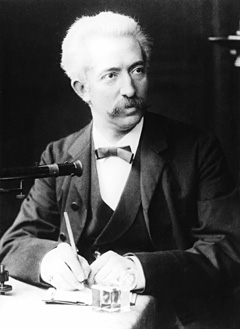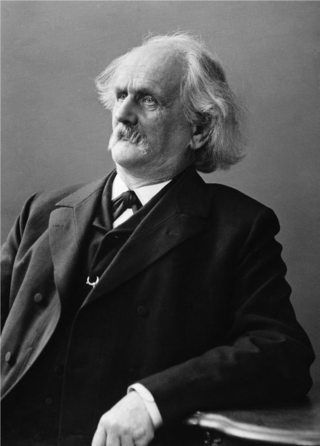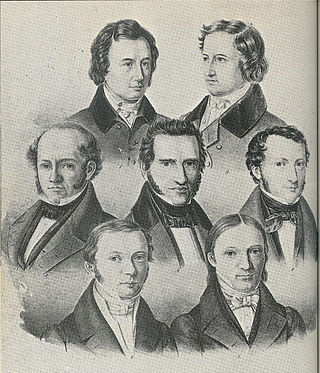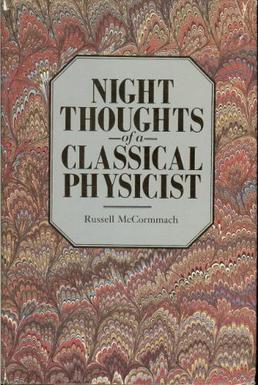Related Research Articles

Ohm's law states that the current through a conductor between two points is directly proportional to the voltage across the two points. Introducing the constant of proportionality, the resistance, one arrives at the three mathematical equations used to describe this relationship:

Max Born was a German-British physicist and mathematician who was instrumental in the development of quantum mechanics. He also made contributions to solid-state physics and optics and supervised the work of a number of notable physicists in the 1920s and 1930s. Born was awarded the 1954 Nobel Prize in Physics for his "fundamental research in quantum mechanics, especially in the statistical interpretation of the wave function".

Henry Cavendish was an English natural philosopher and scientist who was an important experimental and theoretical chemist and physicist. He is noted for his discovery of hydrogen, which he termed "inflammable air". He described the density of inflammable air, which formed water on combustion, in a 1766 paper, On Factitious Airs. Antoine Lavoisier later reproduced Cavendish's experiment and gave the element its name.

Friedrich Ernst Dorn was a German physicist who was the first to discover that a radioactive substance, later named radon, is emitted from radium.

Arnold Johannes Wilhelm Sommerfeld, was a German theoretical physicist who pioneered developments in atomic and quantum physics, and also educated and mentored many students for the new era of theoretical physics. He served as doctoral supervisor and postdoc supervisor to seven Nobel Prize winners and supervised at least 30 other famous physicists and chemists. Only J. J. Thomson's record of mentorship offers a comparable list of high-achieving students.

The Cavendish experiment, performed in 1797–1798 by English scientist Henry Cavendish, was the first experiment to measure the force of gravity between masses in the laboratory and the first to yield accurate values for the gravitational constant. Because of the unit conventions then in use, the gravitational constant does not appear explicitly in Cavendish's work. Instead, the result was originally expressed as the specific gravity of Earth, or equivalently the mass of Earth. His experiment gave the first accurate values for these geophysical constants.
John Michell was an English natural philosopher and clergyman who provided pioneering insights into a wide range of scientific fields including astronomy, geology, optics, and gravitation. Considered "one of the greatest unsung scientists of all time", he is the first person known to have proposed the existence of black holes, and the first to have suggested that earthquakes travelled in (seismic) waves. Recognizing that double stars were a product of mutual gravitation, he was the first to apply statistics to the study of the cosmos. He invented an apparatus to measure the mass of the Earth, and explained how to manufacture an artificial magnet. He has been called the father both of seismology and of magnetometry.

Paul Peter Ewald, FRS was a German crystallographer and physicist, a pioneer of X-ray diffraction methods.

Carl Gottfried Neumann was a German mathematician.

Paul Karl Ludwig Drude was a German physicist specializing in optics. He wrote a fundamental textbook integrating optics with Maxwell's theories of electromagnetism.

The German Physical Society is the oldest organisation of physicists. The DPG's worldwide membership is cited as 52,220, as of 2022, making it one of the largest national physics societies in the world. The number of the DPG's members peaked in 2014, when it reached 63000, but it has been decreasing since then. It holds an annual conference and multiple spring conferences, which are held at various locations and along topical subjects of given sections of the DPG. The DPG serves the fields of pure and applied physics. Main aims are to bring its members and all physicists living in Germany closer together, represent their entirety outwards as well as foster the exchange of ideas between its members and foreign colleagues. The DPG binds itself and its members to advocate for freedom, tolerance, veracity and dignity in science and to be aware about the fact that the people working in science are responsible to a particularly high extent for the configuration of the overall human activity.
Gregor Wentzel was a German physicist known for development of quantum mechanics. Wentzel, Hendrik Kramers, and Léon Brillouin developed the Wentzel–Kramers–Brillouin approximation in 1926. In his early years, he contributed to X-ray spectroscopy, but then broadened out to make contributions to quantum mechanics, quantum electrodynamics, and meson theory.
Martin Jesse Klein, usually cited as M. J. Klein, was a science historian of 19th and 20th century physics.
Edwin Crawford Kemble was an American physicist who made contributions to the theory of quantum mechanics and molecular structure and spectroscopy. During World War II, he was a consultant to the Navy on acoustic detection of submarines and to the Army on Operation Alsos.

The Göttingen Seven were a group of seven liberal professors at University of Göttingen. In 1837, they protested against the annullment of the constitution of the Kingdom of Hanover by its new ruler, King Ernest Augustus, and refused to swear an oath to the king. The company of seven was led by historian Friedrich Christoph Dahlmann, who himself was one of the key advocates of the previous constitution. The other six were the Germanist brothers Wilhelm and Jacob Grimm, jurist Wilhelm Eduard Albrecht, historian Georg Gottfried Gervinus, physicist Wilhelm Eduard Weber, and theologian and orientalist Heinrich Georg August Ewald.

Karl Hermann Knoblauch was a German physicist. He is most notable for his studies of radiant heat. He was one of the six founding members of the Deutsche Physikalische Gesellschaft at Berlin on 14 January 1845.
The Pfizer Award is awarded annually by the History of Science Society "in recognition of an outstanding book dealing with the history of science"

Night Thoughts of a Classical Physicist is a historical novel by historian of science Russell McCormmach, published in 1982 by Harvard University Press. Set in 1918, the book explores the world of physics in the early 20th century—including the advent of modern physics and the role of physicists in World War I—through the recollections of the fictional Viktor Jakob. Jakob is an old German physicist who spent most of his career during the period of classical physics, a paradigm being confronted by the rapid and radical developments of relativistic physics in 1900s and 1910s. This conflict allows for extensive examination of the various tensions placed on Jakob by the academic environment, the German academic system, and the changing academic culture of the early 20th century.
Christa Jungnickel was a German-American historian of science.

Intellectual Mastery of Nature: Theoretical Physics from Ohm to Einstein is a two-volume reference work on the history of theoretical physics by Christa Jungnickel and Russell McCormmach that was initially published in 1986 by the University of Chicago Press. The book was well received and it won the 1987 Pfizer Award, given annually by the History of Science Society. In 2017, the duo released a revised and condensed version of the book through Springer International Publishing titled The Second Physicist: On the History of Theoretical Physics in Germany. The authors also wrote the 1996 and updated 1999 biography of Henry Cavendish, originally titled Cavendish, the book was given the subtitle The Experimental Life in the revised version of 1999.
References
- 1 2 3 2010 Abraham Pais Prize for History of Physics Recipient, American Physical Society
- ↑ Lankford, John (1988). "Review of Intellectual Mastery of Nature: Theoretical Physics from Ohm to Einstein: Vol. 1, The Torch of Mathematics, 1800-1870 by Christa Jungnickel; Russell MacCormmach". The Journal of Higher Education. 59 (2): 231–233. doi:10.2307/1981694. JSTOR 1981694.
- ↑ Forman, Paul (March 1991). "Reviewed work: Intellectual Mastery of Nature; Theoretical Physics from Ohm to Einstein. Vol. 1, The Torch of Mathematics, 1800-1870; Vol. 2, The Now Mighty Theoretical Physics, 1870-1925 by Christa Jungnickel & Russell McCormmach". Philosophy of Science. 58 (1): 129–132. doi:10.1086/289603. JSTOR 187893.
- ↑ Home, R. W. (December 2016). "Review of "Russell McCormmach. The Personality of Henry Cavendish—A Great Scientist with Extraordinary Peculiarities" by Russell McCormmach". Isis. 107 (4): 845–846. doi:10.1086/689782.